Can you smell it in the air? The faint scent of sparks flying and the gravely tenor of battle lines being drawn? The ninth edition of the HBL Pakistan Super League (PSL) is just under a month away. And even as the cricketers from all around the world prepare to descend on Karachi, Lahore, Islamabad, and Multan to take positions, the behind the scene boardroom drama is heating up even more than competition on the field.
After all, the HBL PSL is going through a pivotal moment. This is the penultimate edition of the tournament before the franchise fees for the teams are renegotiated. And as we get closer and closer to the all important tenth edition, a not-so-secret tug of war is developing between the PCB and the franchise owners.
As the tournament has grown, the franchises have been demanding a bigger slice of the pie. The PCB has at different points acquiesced, but constant management changes and bureaucratic red-taping at the board make dealings a slow, tedious process. On top of this, very clear lines have been drawn between the interests of “bigger” PSL franchises such as Multan, Karachi or Lahore against those of the “smaller” teams like Quetta, Peshawar, and Islamabad.
So, where do we start to understand the financial intricacies of franchise cricket in Pakistan? Nowhere other than the tournament’s newest (and most expensive) team, the Multan Sultans.
The Big Bucks
By all rights the biggest news from this season’s HBL PSL should have been (and might still prove to be) the appointment of Hijab Zahid as general manager of the Multan Sultans. Not only is she the first woman to become the GM of an HBL PSL franchise, at 28 she is also the youngest person to find herself in this position. She has joined a very small group of women that have run mens sports franchises and has in the process shattered a glass ceiling or two.

That she did so with a degree in project management and her initial entry into the cricketing world as a broadcaster and journalist only highlights her whirlwind journey. But barely six months into the job Hijab has been thrown into the deep end.
The Lahore office of the Multan Sultans was buzzing when Profit’s team arrived for a scheduled interview with the team owner Ali Tareen and his newly appointed GM. Smack dab in the middle of the city the office is a shared space which Ali Tareen used to conduct his businesses outside of cricket and the Multan Sultans as well. But on the day it was alive with the spirit of cricket. Right before the interview was scheduled both the team’s owner and its general manager had been in back to back meetings first to discuss social media strategy and next to decide on this year’s team jersey.
“There are more things happening off the field than on the ground,” says Hijab Zahid. As she takes a seat in the spacious office littered with cricket regalia including the HBL PSL winner’s trophy that Multan clinched in 2021, it isn’t hard to tell she has been on her feet all day.

Sitting behind his desk, Tareen was relaxed and watchful as Hijab spoke, very much cutting the figure of the mentor guiding the new manager through her first season in charge. “My job title really does describe what I do. I am very much a ‘general’ manager in the literal sense of the word. Everything from management to operations, media, communications, and the game itself have to involve me in the decision making process.”
Most people don’t really think about sports beyond the playing field. The Multan Sultans, for example, is a cricket team that participates in the HBL PSL, has a fan base, and competes to win a tournament. But the Sultan themselves are owned and operated by a company called “Janoobi Cricket Limited”. This is a private limited company that has been created for the purpose of running a profitable enterprise. The main investment vehicle of this company is the Multan Sultans franchise, the rights to which have essentially been leased out by them from the PCB.
As such while the goal of the Multan Sultans players and coaching staff is to win the tournament, the goal of the team’s owners and management is to win the tournament and make a profit while doing so. It helps to look at the franchises not just as teams but as companies participating in Pakistan’s cricket industry. And these aren’t any companies either. All of the HBL PSL franchises have multi-million dollar annual operating budgets and none of them are as expensive as Multan.
A late entrant on the scene, Multan was added to the HBL PSL tournament two years after the tournament started. Back when the PCB had first auctioned off the rights to teams in 2015, there had only been five spots to vie for. Back then the PCB sold the rights to five franchise teams that would play the tournament for $93 million for a 10 year period. The most expensive team to be sold was Karachi Kings for $26 million, followed by Lahore Qalandars for $25 million, Peshawar Zalmi for $16 million, Islamabad United for $15 million, and the Quetta Gladiators for $11 million. Since the teams were sold for a 10-year period, the total cost was payable over 10 years in the form of a yearly franchise fee equivalent to 10% of the team’s value. Essentially, each franchise owner would rent out the use of the franchise for the year for a fixed price.

This was also a failsafe. In case the tournament tanked or one of the owners decided the price they paid had been too high, they could duck out after a year or two and sell the franchise to someone else. But the tournament was almost an instant success. So much so that when Multan Sultan became the sixth team added to the tournament’s third edition it sold for a whopping $41.6 million – and that too only for an eight year period to the Schon group. That meant the Schons were paying an astounding $5.2 million a year to the PCB to keep the Multan Sultans which was double the price that Salman Iqbal was paying to keep Karachi Kings. And that is just the franchise fee — all the other operating costs from paying players and staff to marketing are not included in this.
However, the $5.2 million franchise fee was too much for Asher Schon to keep up with, and after one year the PCB terminated the Schon group’s ownership of the Multan Sultans on good terms. Even this, however, did not stop the price of the team from rising even more. Initially sold for a $41.6 million price tag for eight years, the team was now sold for $45 million for seven years to Aalamgir and Ali Khan Tareen. That meant the Tareens would be paying an astonishing yearly franchise fee of $6.35 million each year to keep ownership of their team.
In an interview with Profit, Ali Naqvi of Islamabad United brought up the rising values of new teams and worried about being sensible regarding expansion. “We are largely happy with how the brand has risen but have sometimes felt us going from one extreme to another. The PCB made a killing with the Multan Sultans fee but that was probably going towards a different extreme and not the true value that the actual financials and brand value would put it at,” he explains. He is pointing towards the fact that the Multan franchise, which was introduced later in the tournament, is worth a lot more than the original five franchises.
So what was the plan? After going through the initial teething stages it became very clear that the HBL PSL would be worth some money and the team owners had made a good gamble. With a new team entering and sources of revenue increasing, something had to give.
Changing times for the HBL PSL
For the first few years the team owners of the HBL PSL bided their time. This was still a new project and they were willing to face a few losses. But almost from the get-go there was a feeling that the division of the spoils from the tournament would become a bone of contention. You see the HBL is run on a strange business model.
Back when the teams had first been sold by the PCB, it had been agreed that at least 80 percent of the revenue from the broadcast rights would be split equally among the five PSL franchises. The remaining 20 percent will go to the PCB. Similarly at least 50 percent of the revenue from the sponsorship rights will be shared among the franchises and the PCB will utilise the other 50 percent. This was all done with the understanding that this was an initial breakdown and the teams would negotiate with the PCB depending on how the tournament was going. After all, this was everybody’s first time doing something like this and none of the stakeholders knew how much their operating expenses would be beyond projections or what kind of return they might or might not get.
In the first year, for example, the HBL PSL turned a profit of $2.6 million. Out of this, the PCB pocketed $0.6 million while the rest of the $2 million were divided equally among the five sides – leaving each side with a mere $0.4 million. The sides all ended up making a significant loss in the first year. And they weren’t particularly quiet about this.
The addition of Multan as part of the tournament in 2018 made things worse. For starters the central revenue pool was now being split six ways instead of five. On top of this Multan’s owners had to contend with even higher franchise fees than the others which made them massively unprofitable. In September 2020, all six of the teams banded together and sued the PCB. As pressure mounted with the court case the teams also began to dilly dally. They began making payments late, blaming the dividends they got from the league. Karachi and Lahore in particular became serial offenders, and the PCB ended up having to pay a lot of expenses out of pocket that they should have been paying from the money they were getting from the teams. Even when it comes to paying the players, when the PSL draft happens, the PCB pays the players and then collects the money from the franchises later or cuts it from the revenue pool before declaring its final profits.
By 2021 the PCB was under Ramiz Raja’s administration who negotiated a new deal with the franchises. The first was that the teams would now get a 95 percent share of the central revenue pool rather than the 5% they used to get. Other concessions were also made. The price of the dollar was fixed for the franchise owners at Rs 170 (it has since risen to as high as Rs 320 in the open market), and the PCB also gave the franchises some relief during the seasons played during Covid-19 lockdowns. But there was one concession that was absolutely not made. One that is very important to all of the franchises, and in particular to the Multan Sultans.
A question of ownership
As we’ve gone into painful detail to explain, the HBL PSL has been a financially lucrative proposition both for the PCB, for the sponsors, and for the players as well. It hasn’t, however, been particularly lucrative for its biggest investors — the franchise owners. Now that the time is coming near, the franchise owners are demanding some sort of shift in the business model, among which one key demand is the introduction of ownership rights in perpetuity. Of the three team owners Profit was able to speak to all three agreed with this policy point.
Back in 2021 when the negotiations were taking place under Ramiz Raja, the franchises wanted the PCB to give them rights in perpetuity. This was refused. Remember, the teams were given to the franchise owners at these rates back in 2015 for 10 years with Multan being given to the Tareens in 2019 for seven years. That means after the 10th edition of the tournament in 2025, the teams will be up for rebidding. The current owners will have the opportunity to pay an increased franchise fee, which will be calculated as the existing fee + 25% or 25% of market value of the franchise, whichever is higher. If any of the owners refuse to do this, the team will go up for bidding again.
Essentially this means that the franchise owners are less owners and more tenants. The PCB has the final rights to the teams and this gives them an undue advantage in what should be a simple business partnership.
Hijab has only been at the job six months but has already seen a glimpse of just how difficult it is to manage a relationship with the country’s cricket board. It is now part of her job to manage this all important relationship.
“This isn’t just about the Multan Sultans. As a league the PSL has to give ownership. Right now we are kind of renting the team from the PCB every single year. If we bring in a new partner to invest in the franchise we have to go to the PCB first. If we want to change ownership we have to ask them too,” explains Tareen. “They are the real owners. And that is why there is some hesitation to invest further.”
This is a bigger issue than it might seem at first glance. The way franchise sports tournaments work is that one expects the team owner to invest in their teams so that they can then make a profit off of it. This investment further increases the value of the tournament and helps in growing it. In this scenario, however, since the owners are really only tenants they do not particularly want to pour more money into something that is not an asset. The thinking is that early entrants that bought rights to the team in 2015 or 2017 took a risk and now that the tournament has taken off they should have their reward for that risk.
“Karachi, Lahore and Multan are all making losses at the current franchise fees. The only way to grow the tournament is for the teams to invest further in it. When you’re already posting losses and you don’t even own the asset and are only renting it, why would you pour more money into it? Unless we own the asset we will not want to invest more into it. As the teams grow the desire to invest in it will also increase. That is the point of being an early mover. You get that ownership for cheap and then help grow a new brand,” Tareen says.
“If the team is an asset I will invest more. So how do we convert this into a perpetuity model? That is the question. Because when that happens is when the tournament really blossoms. That is when you’ll have owners investing in stadiums and paying players more money. I think this is the future of the PSL and we need to talk to the PCB about this as team owners.”
The Times They Are A-Changin?
So here is what we have. The HBL PSL is nearing a point where all of the franchise fees will be up for a raise. The tournament has become a critical and commercial success but no finalised business model for it has taken shape. As the time draws closer, the teams are preparing their arguments and figuring out what their ideal scenarios will look like.
On the one hand there are smaller teams like the Islamabad United or Quetta Gladiators which have significantly smaller franchise fees and have been turning modest profits out of the tournament’s equally divided central revenue pool. They are relatively happy with the current system but are afraid their franchise fees might be raised to an unsustainably high rate in 2025. There are the larger teams like Lahore and Karachi which have been running from pillar to post about this since nearly the beginning trying to get a better deal. There is the Multan Sultans which falls into a separate category all together. And then there is the PCB which wants to add more teams to the tournament, collect more franchise fees in the process, and divide the central revenue pool down further.
So what will happen? For starters, all of the teams are united in their opposition to new teams being added to the tournament under the current revenue sharing model. The central revenue pool is already divided neatly between the six sides and new teams will only reduce each team’s cut further. There have been suggestions made that the bigger teams get a bigger slice of the pie and the smaller ones less of a cut, but this is not viable since the equation will always be three teams against three when time comes for negotiation (IU, QG, and PZ against KK, LQ, and MS). On top of this, the PCB will use this divide between the franchises to their own advantage.
As of now it seems that the demand the franchises will bring to the table is ownership in perpetuity. “If you ever want to change the equity model you will have three versus three. The share of the central pool is divided six ways. Some teams are still tolerating losses while others are at least breaking even. If you want to add more teams that revenue gets split in more directions and then you will have even bigger losses perhaps for all of the teams. Every single team will oppose this,” claims Tareen. “But there is one solution. If there is perpetuity you can add as many teams as you want.”
What shape the HBL PSL takes eventually is up to the imagination. What we can tell with some certainty is that the PCB is going to be looking to take full advantage of their position, but that the teams are not going to agree meekly. They are stakeholders in Pakistan’s cricket infrastructure now and with that comes power. Only time will tell whether they are able to band together and leverage their positions.



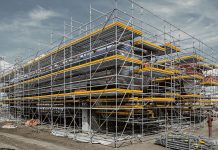
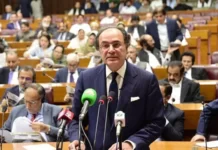

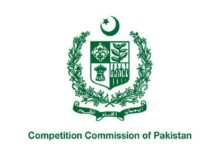













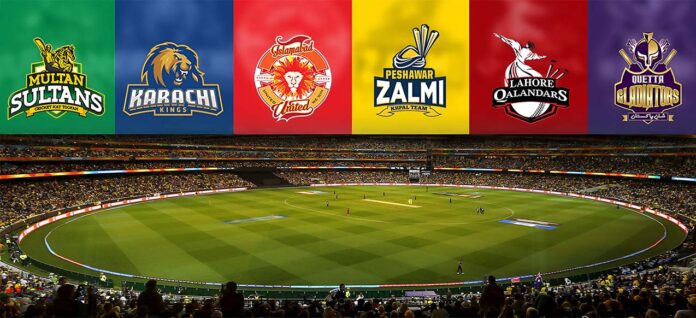
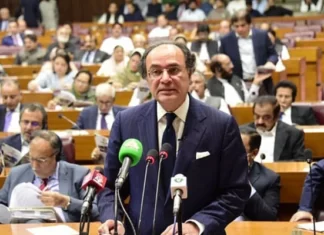



I read this article. This is very informative.
paying an astounding $5.2 million a year to the PCB to keep the Multan Sultans which was double the price that Salman Iqbal was paying to keep Karachi Kings.
Such small fees , how can owners be making a loss ?
Upon perusing the contents of this article, I found it to be highly enlightening and rich in valuable information. The insights and knowledge presented within its pages greatly contributed to my understanding of the subject matter, making it a truly informative read.
very informative piece